The Seasonic PRIME Titanium PSU (650W, 750W, 850W) Review: Mythical Performance
by E. Fylladitakis on April 7, 2017 9:00 AM ESTCold Test Results
For the testing of PSUs, we are using high precision electronic loads with a maximum power draw of 2700 Watts, a Rigol DS5042M 40 MHz oscilloscope, an Extech 380803 power analyzer, two high precision UNI-T UT-325 digital thermometers, an Extech HD600 SPL meter, a self-designed hotbox and various other bits and parts. For a thorough explanation of our testing methodology and more details on our equipment, please refer to our How We Test PSUs - 2014 Pipeline post.
| Seasonic PRIME Titanium Efficiency (~25ºC Ambient Temperature Testing) |
||||
| % | Titanium Requirements (230AC) |
650TD | 750TD | 850TD |
| 10 | 90% | 93.1% | 93.2% | 92.9% |
| 20 | 94% | 94.2% | 94.2% | 94.1% |
| 50 | 96% | 96.3% | 96.2% | 96.1% |
| 100 | 91% | 94.8% | 94.8% | 94.8% |
We usually expect to see an 80Plus Titanium certified unit to borderline pass or even fail the certification requirements during our testing. This is because we are supplying 230V AC to the unit and most models have been optimized for an 110V AC input, as the certification requirements are significantly lower and makes it slightly easier for the designer to meet them. Seasonic positively surprised us because all three of the new PRIME Titanium units are extremely efficient, easily meeting the stricter 80Plus Titanium performance requirements with an input voltage of 230V AC. The top efficiency of all three units is ~96.2% when operating at 50% capacity, with a nominal load range (20%-100%) efficiency average of 95.1% (650W model) to 95.3% (750W/850W models). The low load efficiency with the PRIME Titanium PSUs operating at 10% capacity is above 84.5%, which is much higher than the peak efficiency many low-cost PSUs can hope to achieve. Still, the efficiency of the units once they reach 20% capacity is so high that the thermal losses actually seem to drop instead of increasing.
Please note that we had the hybrid fan mode disabled during our testing in order to showcase the low load noise levels with the fan turned on. With the hybrid mode turned on, the fan starts when the load reaches about 20-25% of the unit’s rated capacity.
The internal operating temperatures of the Seasonic PRIME Titanium are very low, which is to be expected with such an efficient design. The cooling fan initially appears to have a “ladder” behavior, increasing its speed in steps in relation to the load, but the thermal control circuit is actually linear. When the units are operating in an ambient temperature environment, the speed increases are just very small in relation to the fan’s operating range, which appears as a step-like behavior on a chart. The fan of any of the three units did not even reach 50% of its rated speed at maximum load under these operating conditions, operating way below its optimal range and barely reaching audible sound pressure level figures.
The hybrid fan mode is the only thing that does not make much sense with these three units. If the setting is set to off, the fan will start as soon as the PSU is powered on regardless of the load, but will still retain its minimum possible rotational speed until the thermal control circuit decides that it needs to spin faster. The fans of the PRIME Titanium units are inaudible when running at such low speeds. If the setting is turned on, the fans will start before the point they become audible with the setting turned off, meaning that there is no practical difference at low loads whether the fan is spinning or not. Considering that the fans of the units are inaudible when spinning at their minimum speed, it might be wise to keep the hybrid mode turned off. Lower operating temperatures can only increase the longevity of a PSU, even one as good as this one.


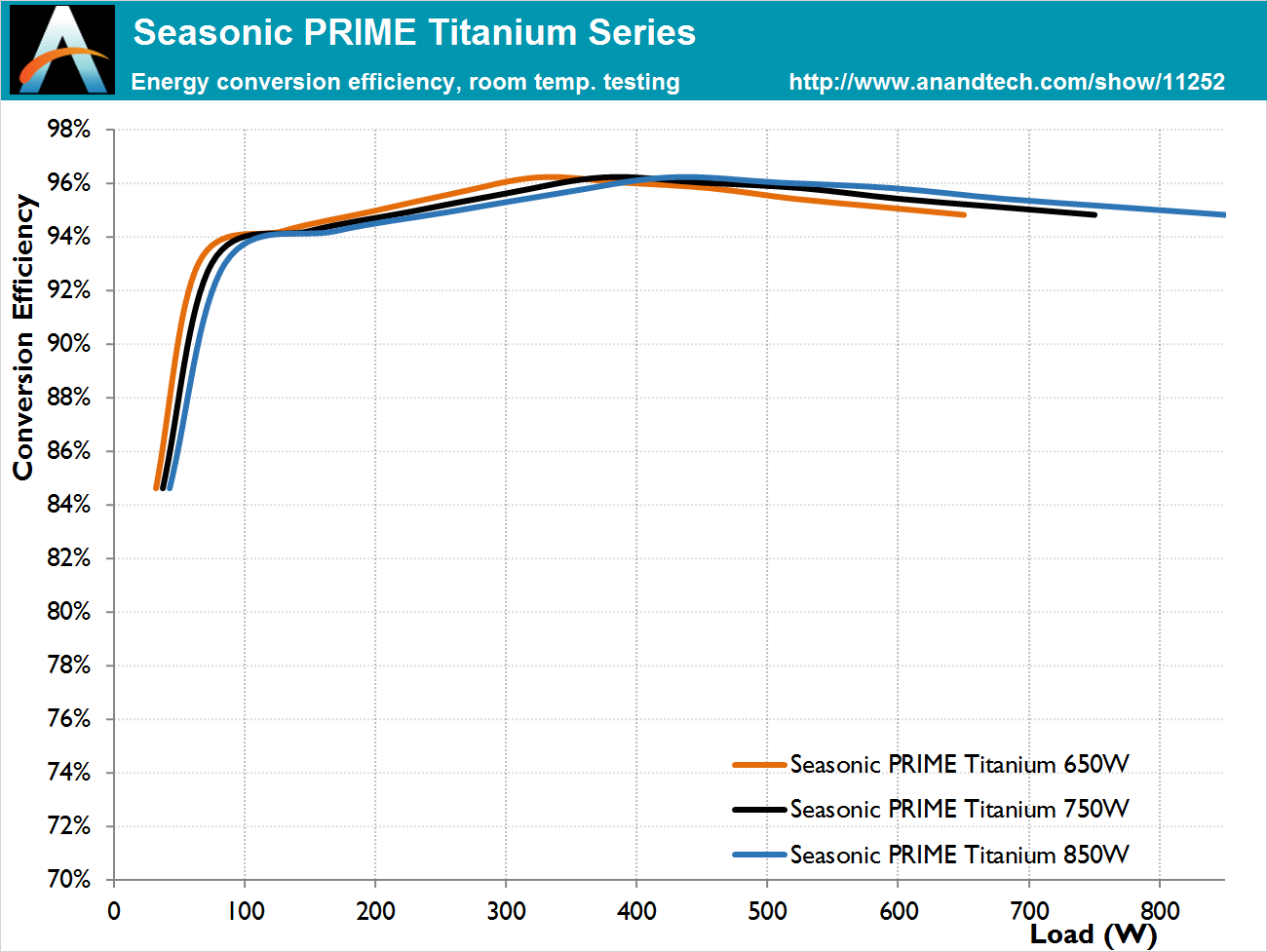
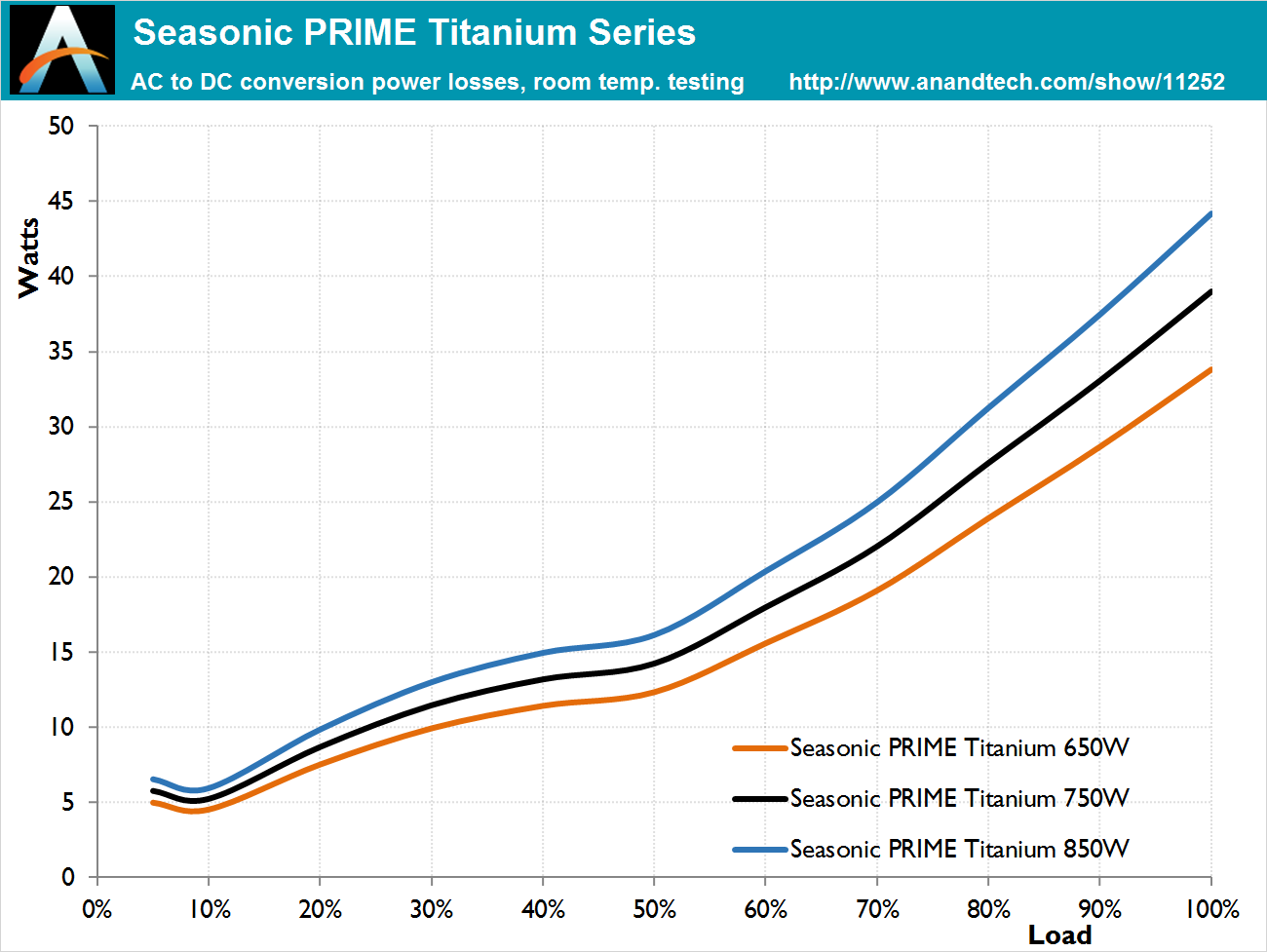
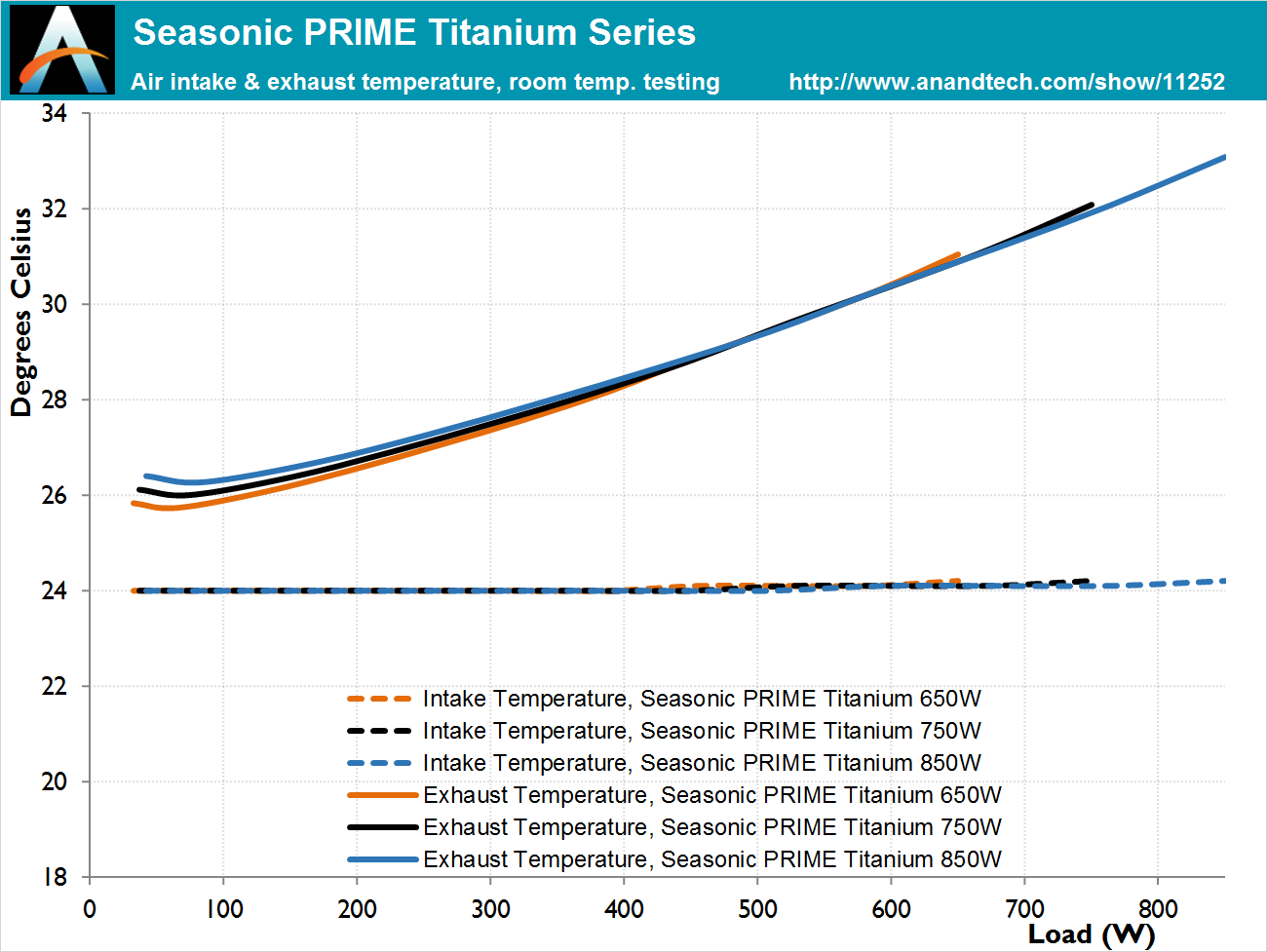
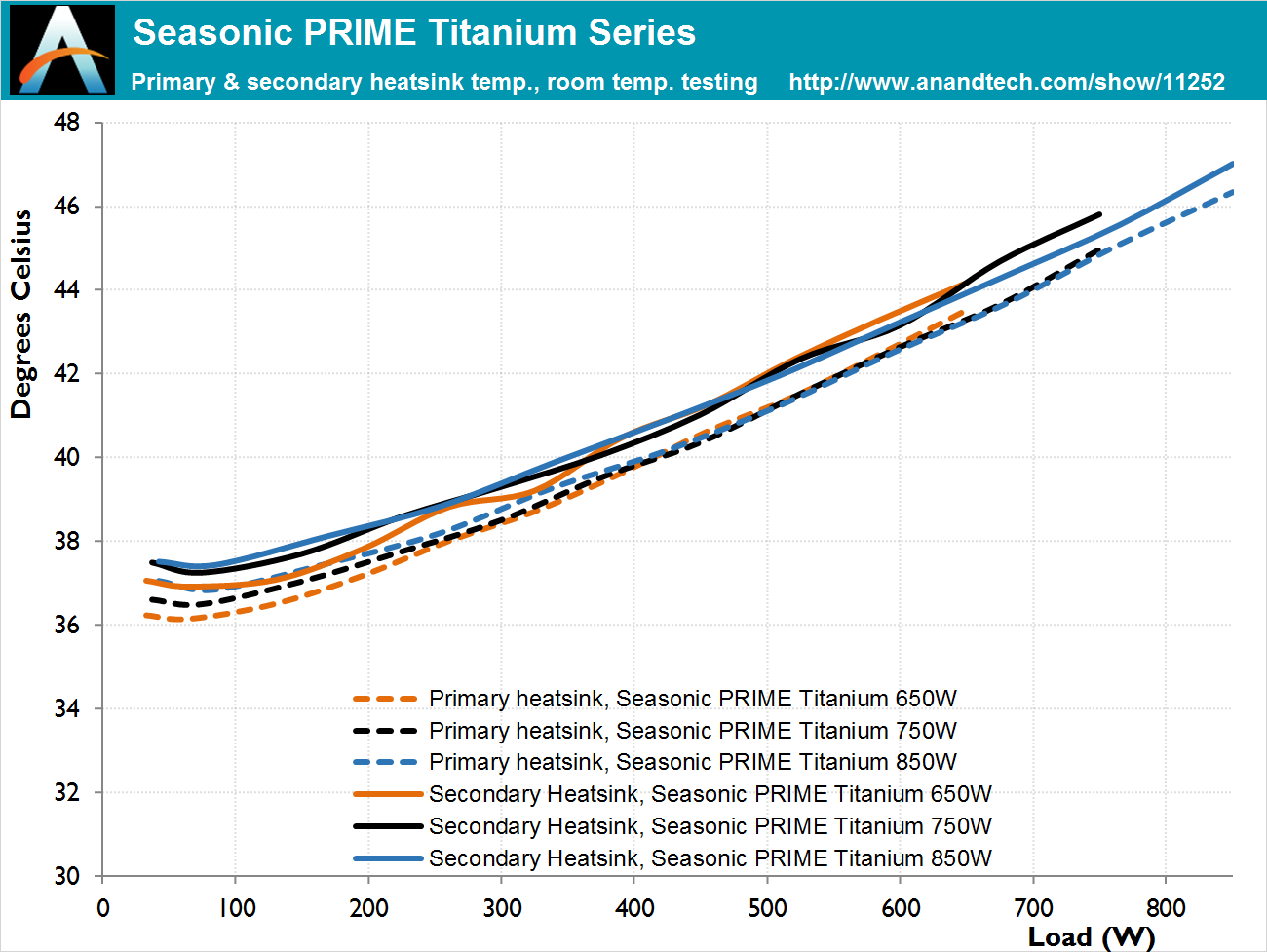
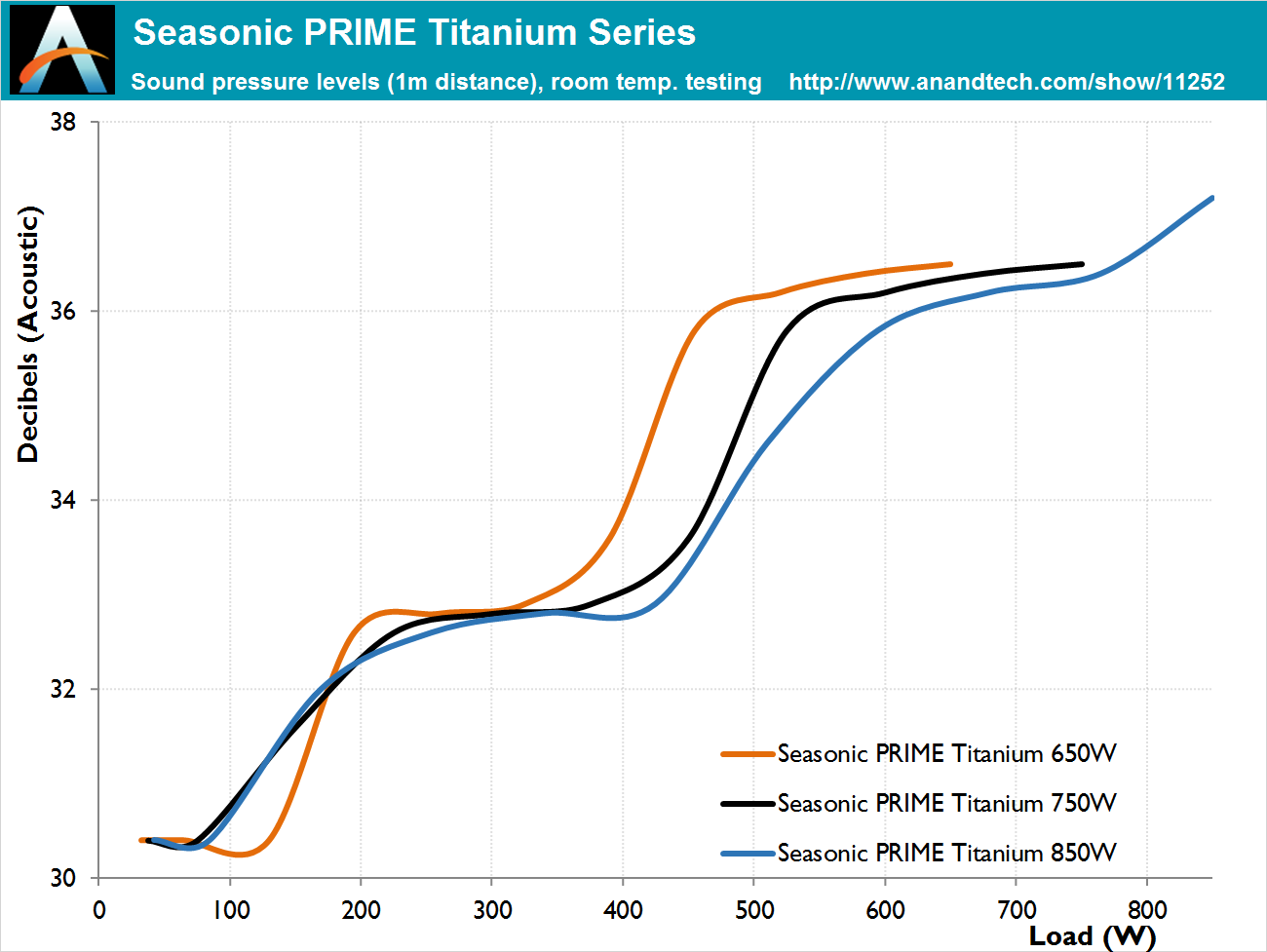








86 Comments
View All Comments
blahsaysblah - Saturday, April 8, 2017 - link
Your math??Platinum only has guarantee for 20% and above, for a 850W PS at 20% load that is 170 Watts. Platinum guarantees 90% efficiency at 20% load so 170Watt load from PC would draw 189W at wall.
Titanium adds a 10% load guarantee threshold of 90% efficiency, so a 850W PS need a 85W(95W at wall) load to 170W(185W at wall, titanium gives 92% at 20%) load.
Exodite - Friday, April 7, 2017 - link
Any word on the pricing of the fanless 600W unit?I've been using a 400W fanless gold unit for quite some time and while I expect it to last many years still it's nice to have options.
It's unfortunate, if understandable, that the high-end supplies come with such high wattages as efficiency suffers under low load scenarios.
oranos - Friday, April 7, 2017 - link
seasonic #1jabber - Friday, April 7, 2017 - link
Isn't it time we moved to some newer and more compact power connectors for motherboards? The current selection are very 1980's.JasperJanssen - Saturday, April 8, 2017 - link
No, it really isn't time to move to more compact connectors. For the amount of power you need to transfer, it doesn't really get much more compact.Byte - Sunday, April 9, 2017 - link
That's what iMacs are for.lordken - Saturday, April 8, 2017 - link
you aren't really a tech guy are you?Don't fix whats not broken. Why change power connectors as they fulfill their purpose just good? What would be benefit of such more compact redesign? That they look better? lol give me a break
And if it is disgrace for your sight to look at them, you only need to do it once when you build PC. Hope you can manage.
Go and buy yourself new phone or fancy toy to satisfy your thirst for modernity...geez
surt - Sunday, April 9, 2017 - link
There are also those niggly laws of physics to deal with.robotmaster0 - Sunday, April 9, 2017 - link
Funny you would say that since the 80's mainboard connectors (AT - 2x6pin Molex) were smaller then our big modern ones (ATX). Of course I would not want to be constrained to AT power requirements.jpak725 - Saturday, April 8, 2017 - link
if only seasonic made sfx psus of this quality